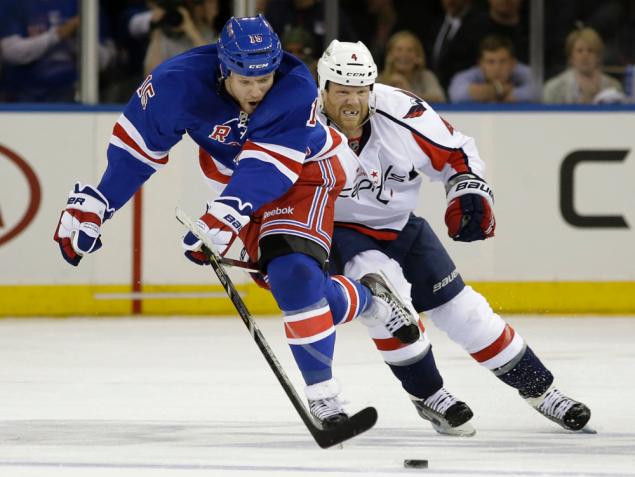“The Rangers play boring hockey. They sit on leads, they block shots, and the don’t even attempt to score once they have the lead.”
I’m sure you’ve heard this before. Almost every media outlet says this about the Rangers during the postseason. The logic here is that the Rangers block a lot of shots, thus are a passive team and are content sitting on one-goal leads. The logic is flawed, as blocking shots has nothing to do with the aggressiveness of a team once they obtain a lead. Blocking shots is how a team plays in their own zone. There are two other zones in hockey with completely different systems, as we’ve noted on this site many times.
Aside from the Caps series, where the Rangers were completely manhandled in terms of Corsi (not a single player had a positive Corsi), the Rangers as a whole are not a team that sits back on leads. Even in the Caps series the Rangers were still generating offense, but the Caps had an overwhelming puck possession advantage that it marred their attempts. This is something we’ve detailed with chalk talks and systems before, but now we have some data to match the eye test.
This brings us to situational team Corsi. I will touch more in-depth tomorrow, but situational team Corsi is exactly that: The Corsi of a team based on the current situation (note: Score) of the game. Since Corsi is a puck possession metric that measures the +/- of shot attempts (on net, missed, blocked), situational Corsi just breaks this down into the Corsi of a team at any particular score (up 1, down 1, tied, etc).
Looking at the table below, you can really see how the Rangers are not a team that sits on leads. I am using CF% (Corsi For Percent, which measures the percentage of shot attempts on the ice, more on this tomorrow) and FF% (same thing, but for Fenwick, which does not include blocked shots in the equation, also more on that tomorrow).
| Situation | CF% | League Rank | FF% | League Rank |
| Tied | 51.0% | 12th | 51.2% | 12th |
| Up 1 | 54.0% | 4th | 51.6% | 5th |
| Up 2+ | 44.4% | 14th | 46.3% | 11th |
The table itself is pretty interesting (using the regular season numbers from this year), as the Rangers actually begin to generate more offense when already up a goal. Their CF% and FF% go up, and their league rankings jump to the top-five in the league. When tied, the Rangers are about league average in puck possession.
When up two or more, they tend to lose some steam, which probably has more to do with energy than tactics. That said, they are still in the upper half of the league when it comes to puck possession and shot generation in those situations.
We’ve said this about a billion times on this blog, but the Rangers are not a passive team, even with a lead. This is a team that is among the best in the league at maintaining puck possession with a lead, especially when holding a fragile one-goal lead. This is something we should look for the Rangers to continue with as they get deeper in their series with the Bruins.
I would like to thank Corey Sznajder (Shut Down Line) for pointing me to the resource for this post.
Share:
More About:Analysis

